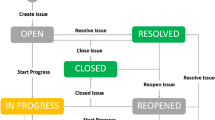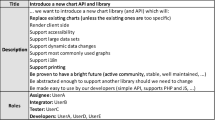Abstract
Software project management is always been a crucial aspect of modern software development research and practice due to the very high stake of time, financial constraints, and various external factors correlating to the outcome of the projects. In the recent past, multiple parallel research outcomes can be observed in terms of predicting the software project outcomes in the form of success or failure. Nonetheless, due to the wide variety of influencing parameters in the software project matrix, the prediction of the outcome is highly inaccurate. Thus, in this work, a novel multi-regression model is deployed to predict the outcome of the software projects. The proposed multi-regression method is a collaborative regression method, which deliberates the internal regression between the project matrix attributes and generates the most optimal regression model. The outcome of the proposed multi-regression method is nearly 98.3% and almost outperformed all the other parallel research outcomes. Also, this work delivers yet another outcome in form of a recommendation system for an optimal team design matrix based on various team capabilities. The recommendation system will analyze the existing human resources in the organization and based on the statistics of the project, client history, and human resource capabilities will produce the age-based diversity, experience-based diversity, and skill-based diversity for various project roles to make the software project management highly timely and reduce risk of project failures.
Access this chapter
Tax calculation will be finalised at checkout
Purchases are for personal use only
Similar content being viewed by others
References
Anagnostopoulos A, Becchetti L, Castillo C, Gionis A, Leonardi S (2012) Online team formation in social networks. In: Proceedings of 21st international conference on World Wide Web (WWW), vol 12, pp 839–848
Maenhout B, Vanhoucke M (2015) An exact algorithm for an integrated project staffing problem with a homogeneous workforce. J Scheduling 19(2):107–133
Stylianou C, Andreou A, Ruhe G, Wohlin C (2014) Human resource allocation and scheduling for software project management. In: Software project management in a changing world. Springer, Berlin, Germany, pp 73–106
Li C-T, Shan M-K, Lin S-D (2013) On team formation with expertise query in collaborative social networks. Knowl Inf Syst 42(2):441–463
Pinha CD, Ahluwalia SR, Senna P (2016) The combinational multi-mode resource constrained multi-project scheduling problem. Int J Supply Oper Manag 3(3):1391–1412
Ghasemian F, Zamanifar K, Ghasem-Aqaee N, Contractor N (2016) Toward a better scientific collaboration success prediction model through the feature space expansion. Scientometrics 108(2):777–801
Jin G, Séverine S, Philippe G (2017) Management of the design process: human resource allocation in factories of the future. Insight 20(4):19–22
Turner JR (2018) The management of the project-based organization: a personal reflection. Int J Project Manag 36(1):231–240
Thorne N Project management triangle Nick’s digital solutions, April 2016, [online] Available http://www.nicksdigitalsolutions.com/project-management-triangle/
A Guide to the Project Management Body of Knowledge (PMBOK Guide), Newtown Square, PA, USA, 2017
Reagans R, Miron-Spektor E, Argote L (2016) Knowledge utilization coordination and team performance. Org Sci 27(5):1108–1124
Rajkumar S (2010) Art of communication in project management. In: Proceedings of PMI research conference defining future project manage, pp 11–14
Shree Raja Gopal TG, Murali K (2016) Analysis of factors affecting labour productivity in construction. Int J Recent Sci Res 7(6):11744–11747
The public 2020 stack overflow developer survey results. https://insights.stackoverflow.com/survey/2020
Author information
Authors and Affiliations
Editor information
Editors and Affiliations
Rights and permissions
Copyright information
© 2022 The Author(s), under exclusive license to Springer Nature Singapore Pte Ltd.
About this paper
Cite this paper
Venkata Ramana, B., Narsimha, G. (2022). Identification of the Ideal Team Capabilities and Predictive Success Measure for Software Projects Using Machine Learning. In: Saini, H.S., Sayal, R., Govardhan, A., Buyya, R. (eds) Innovations in Computer Science and Engineering. Lecture Notes in Networks and Systems, vol 385. Springer, Singapore. https://doi.org/10.1007/978-981-16-8987-1_64
Download citation
DOI: https://doi.org/10.1007/978-981-16-8987-1_64
Published:
Publisher Name: Springer, Singapore
Print ISBN: 978-981-16-8986-4
Online ISBN: 978-981-16-8987-1
eBook Packages: Intelligent Technologies and RoboticsIntelligent Technologies and Robotics (R0)




